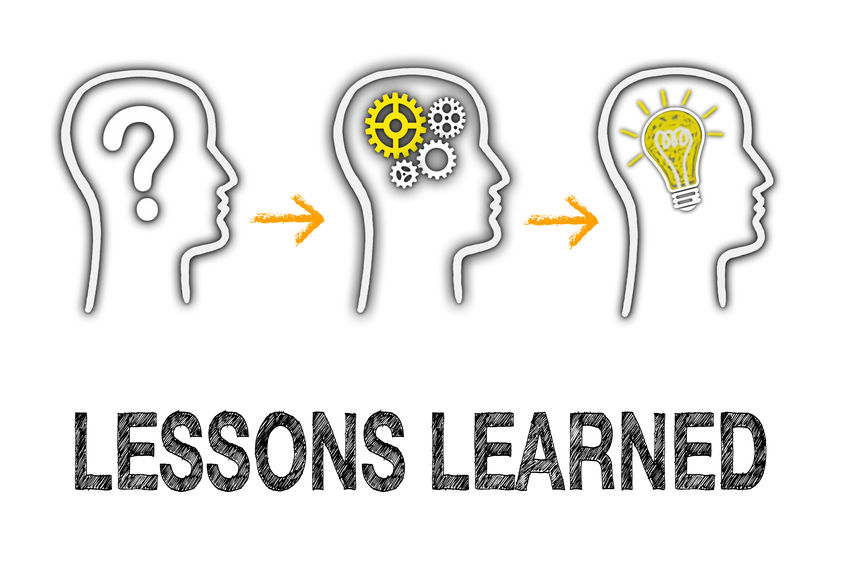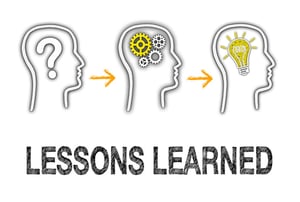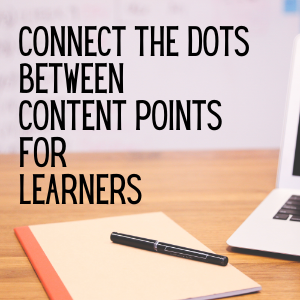Virtual Classroom Facilitation Techniques: From Good to EXCEPTIONAL
If you are a good virtual facilitator (and after the year we have all had, I bet you are!), you have quite a few enviable skills! You’ve mastered the...
3 min read
 Jennifer Hofmann
:
Jan 16, 2020 12:26:49 PM
Jennifer Hofmann
:
Jan 16, 2020 12:26:49 PM


In 2020, we’ll be sharing the lessons we’ve learned about the virtual classroom over the last twenty years, and we’ll link back to our more detailed content around these topics, in case you want to learn more!
When organizations started to adopt the virtual classroom in the 1990s, the focus was on the technology-driven benefits it could provide - Reduction in travel cost, less disruption to learner schedules, and the ability to share subject matter expertise in a much more immediate and relevant way.
We could train everyone, when they needed it, and save money at the same time.
Unfortunately, instead of a rich, engaging learning experience, learners were subjected to hours and hours of lecture and PowerPoint slides. We taught our learner population to dread the “webinar.”
There are many reasons for this - we didn’t design to take advantage of the new learning environment; we didn't teach people the new rules on how to behave and interact in this environment; and we assumed that we didn’t need to update our facilitation skills once we lost eye contact and body language.
In this post, I’ll address some of the lessons we learned about virtual facilitation.
It seemed to most of us that it would be easy for facilitators to make the transition from the traditional classroom. We had a facilitator, learners, a slide deck, and an identified training goal.
These are all characteristics of a traditional environment. So, when the technology was new, it was an obvious assumption to think that the virtual classroom in the traditional classroom would behave in similar ways.
We learned that we should not just be focused on similarities but also on differences. It’s now obvious the virtual classroom is a radically different learning environment than the face-to-face environment, with unique characteristics. For example:
With the virtualization of learning, an individual’s desktop computer has become a learning environment – in other words, the desktop computer is a “place”. When identifying a desktop computer as a “place,” this definition assumes it is not located in a formal classroom setting - rather, individuals are learning while physically separated from one another, and facilitators must learn to foster environmental engagement in different ways.
Tablets and smart phones have become so ubiquitous and powerful, we expect that anything we accomplish on a desktop computer also can be accomplished on a mobile device – including training and learning! Unfortunately, as we all have probably experienced, that’s not always true. Learners can try to participate in a program designed for a desktop environment using a mobile device, but the learning won’t be as meaningful. (However, in some circumstances, of course, mobile virtual learning will work).
Even in the same sessions, you might be dealing with Multi-Method delivery, where some learners are on desktop computers, some on mobile devices, and some group together in a room watching the session projected onto a screen!
It is not uncommon for us to facilitate sessions to learners from many different countries. Differences in language, culture, and even time zones can change the dynamic of the class, and have an impact on a facilitator’s approach.
Create learning experiences instead of lecture heavy, slide heavy webinars.
Build trust with the learners without the benefit of eye contact and body language.
Read the body language in the bandwidth.
Redefine virtual learning so it becomes an accepted - even desired! - training delivery method.
We’ve learned a lot over the last several decades about how to successfully facilitate virtual learning. When asked for some quick lessons learned, I remind people that:
Delivery is at the pleasure of the learners’ calendar. You need to balance the content and the conversation with the amount of time scheduled - often to the minute. If you rush through content to make sure you “finish the slides” you’ll quickly create cognitive overload and lose your learners. However, you also can’t go past the scheduled end time, because you will be competing with other calendar events.
Environment matters! Fostering environmental engagement, where both facilitators and learners are fluent in the use of the virtual classroom tool, is critical to success.
Use a producer! In the two decades that InSync has designed, delivered, and supported virtual training, one factor has proven essential for success: the virtual classroom producer. These individuals bring with them a critical skill set, especially designed for enabling learner and facilitator success.
To expedite getting content to the organization, we often ask Subject Matter Experts (SMEs) to facilitate presentations from their desktops. This approach can be effective because it reduces travel time and keeps the experts in their work environments, where they can be accessed easily before and after sessions, but Subject Matter Experts are not trainers. To make these SME sessions successful, we need to train the experts how to take advantage of the environment, tightly manage content, and use a producer (preferably for more than tech support).
Webcams don’t take the place of a face to face interaction - when you use video, use it to make a point, and use it well.
Here is my key takeaway – it takes training, practice, and experience to become an exceptional virtual facilitator. Don’t expect to master the skill overnight, and seek out mentors and coaches to ensure you are always improving.
Do you have some Virtual Facilitation lessons for us? Please use the comment section below to share your ideas.
No matter your virtual facilitation experience, InSync Training has an accredited certificate that is right for you.
Consider the Virtual Classroom Facilitation Mastery Series. Ready to invest in a hands-on, evaluated experience with individual coaching and practice opportunities? The Mastery Series shares proven practices developed over two decades that will help ensure your success in the virtual classroom.

If you are a good virtual facilitator (and after the year we have all had, I bet you are!), you have quite a few enviable skills! You’ve mastered the...

We all know that organizations have had to quickly move face-to-face training to the virtual classroom. This seismic shift extends beyond...